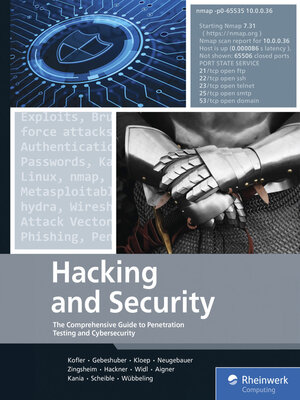
Hacking and Security
ebook ∣ The Comprehensive Guide to Penetration Testing and Cybersecurity
By Rheinwerk Publishing, Inc

Sign up to save your library
With an OverDrive account, you can save your favorite libraries for at-a-glance information about availability. Find out more about OverDrive accounts.
Find this title in Libby, the library reading app by OverDrive.



Search for a digital library with this title
Title found at these libraries:
| Loading... |
Explore hacking methodologies, tools, and defensive measures with this practical guide that covers topics like penetration testing, IT forensics, and security risks.Key FeaturesExtensive hands-on use of Kali Linux and security tools Practical focus on IT forensics, penetration testing, and exploit detection Step-by-step setup of secure environments using Metasploitable Book DescriptionThis book provides a comprehensive guide to cybersecurity, covering hacking techniques, tools, and defenses. It begins by introducing key concepts, distinguishing penetration testing from hacking, and explaining hacking tools and procedures. Early chapters focus on security fundamentals, such as attack vectors, intrusion detection, and forensic methods to secure IT systems. As the book progresses, readers explore topics like exploits, authentication, and the challenges of IPv6 security. It also examines the legal aspects of hacking, detailing laws on unauthorized access and negligent IT security. Readers are guided through installing and using Kali Linux for penetration testing, with practical examples of network scanning and exploiting vulnerabilities. Later sections cover a range of essential hacking tools, including Metasploit, OpenVAS, and Wireshark, with step-by-step instructions. The book also explores offline hacking methods, such as bypassing protections and resetting passwords, along with IT forensics techniques for analyzing digital traces and live data. Practical application is emphasized throughout, equipping readers with the skills needed to address real-world cybersecurity threats.What you will learnMaster penetration testing Understand security vulnerabilities Apply forensics techniques Use Kali Linux for ethical hacking Identify zero-day exploits Secure IT systems Who this book is for
This book is ideal for cybersecurity professionals, ethical hackers, IT administrators, and penetration testers. A basic understanding of network protocols, operating systems, and security principles is recommended for readers to benefit from this guide fully.
]]>





